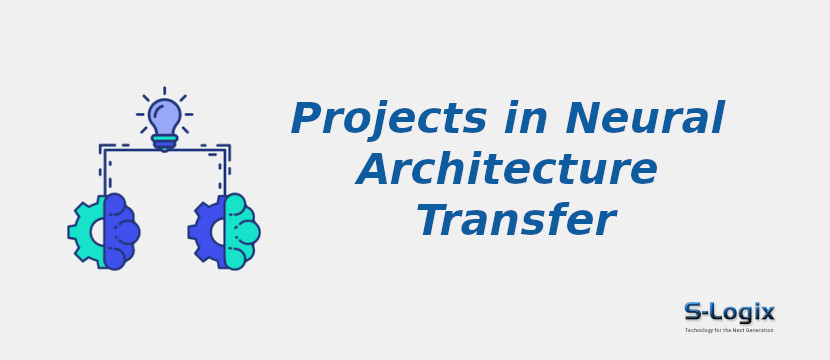Project Background:
Neural Architecture Transfer (NAT) uses insights from neural architecture search (NAS) to facilitate knowledge transfer across different tasks, domains, or architectures in deep learning. The background of NAT involves recognizing the challenges and limitations associated with training DNNs from scratch for every new task or dataset. Traditional methods often require significant computational resources and expertise to design and optimize architectures tailored to specific tasks leading to inefficiencies and scalability issues.
NAT addresses the challenges by exploring techniques to transfer knowledge learned from one architecture or task to another, enabling more efficient and effective learning across a wide range of scenarios. By leveraging insights gained from NAS, which aims to automatically discover high-performing neural network architectures, NAT seeks to identify common architectural patterns, design principles, and optimization strategies that can be transferred and adapted to new tasks or domains.
This work may also explore theoretical foundations, algorithmic frameworks, and practical applications of NAT in various deep learning tasks, including image classification, object detection, NLP, and reinforcement learning. The NAT lays the foundation for developing innovative approaches to neural architecture transfer that can improve learning efficiency, scalability, and performance in deep learning applications.
Problem Statement
- Training DNNs from scratch is computationally expensive and time-consuming.
- Designing task-specific architectures requires domain expertise and manual experimentation.
- The vast space of possible architectures makes finding optimal designs challenging.
- Architectures optimized for one task may not generalize well to others.
- Existing transfer learning approaches may not effectively transfer knowledge across architectures or tasks.
- Deploying DNNs across different platforms requires adaptable architectures.
- Training DNNs from scratch requires large amounts of labeled data.
- Achieving optimal performance requires fine-tuning architectures and hyperparameters.
- Complex architectures may lack interpretability and transparency.
- DNN architectures need to adapt to changing data distributions and emerging tasks.
Aim and Objectives
- To develop techniques for transferring knowledge across neural network architectures to improve efficiency and performance in deep learning tasks.
- Develop algorithms for transferring architectural knowledge between neural networks.
- Explore methods for adapting pretrained architectures to new tasks.
- Investigate strategies for optimizing performance across different architectures and domains.
- Evaluate the effectiveness of neural architecture transfer techniques on various deep learning tasks and datasets.
Contributions to Neural Architecture Transfer
- Development of novel algorithms for transferring architectural knowledge between neural networks.
- Exploration of techniques for adapting pretrained architectures to new tasks and domains.
- Investigation of strategies for optimizing performance across different architectures.
-
Advancement of scalability and efficiency in neural architecture transfer methods.
- Empirical validation of the effectiveness of neural architecture transfer techniques across various deep learning tasks and datasets.
Deep Learning Algorithms for Neural Architecture Transfer
- Neural Architecture Search (NAS)
-
Progressive Neural Architecture Search (PNAS)
-
Efficient Neural Architecture Search (ENAS)
-
DARTS (Differentiable Architecture Search)
-
Random Search
-
Bayesian Optimization
-
Genetic Algorithms
-
Reinforcement Learning-based Architecture Search
-
Evolutionary Algorithms
-
Transfer Learning-based Architectural Adaptation
Datasets for Neural Architecture Transfer
- ImageNet
-
CIFAR-10
-
MNIST
-
COCO
-
Fashion-MNIST
-
LSUN LFW (Labeled Faces in the Wild)
-
CelebA
-
SVHN (Street View House Numbers)
-
OpenAI Gym environments
Software Tools and Technologies:
Operating System: Ubuntu 18.04 LTS 64bit / Windows 10
Development Tools: Anaconda3, Spyder 5.0, Jupyter Notebook
Language Version: Python 3.9
Python Libraries:
1. Python ML Libraries:
- Scikit-Learn
- Numpy
- Pandas
- Matplotlib
- Seaborn
- Docker
- MLflow
2. Deep Learning Frameworks:
- Keras
- TensorFlow
- PyTorch
